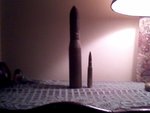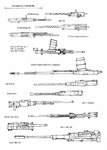bobbysocks
Chief Master Sergeant
brain fart....meant to say P 38 ( editted the post ), the P 39 already had a 37mm ( hense the reason for vapor lock of the cranium). 39 had other problems besides lack of power..."she tumbles and spins and soon will auger in" was a drinking song about the plane. but the 38 could have really be a good platform for a 37mm...dont know.


